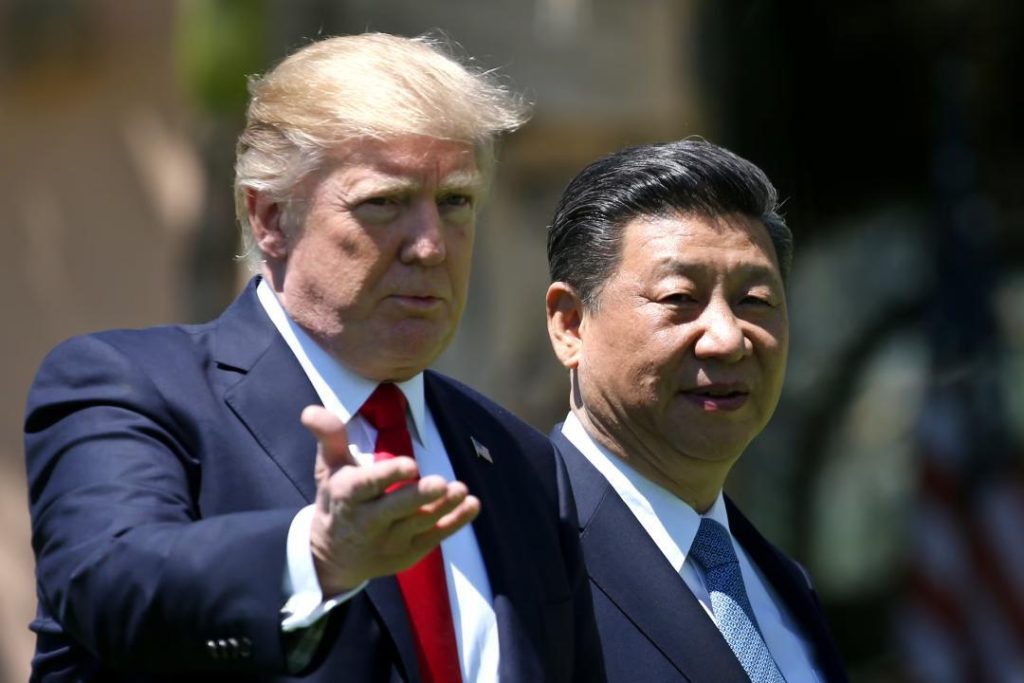
Trump to Allow 6,00,000 Chinese Students in US Amid Tariff Talks
In a significant move, US President Donald Trump has announced that the United States will permit entry to 6,00,000 Chinese students amid ongoing tariff talks with China. This development marks a reversal of earlier visa restrictions targeting Chinese nationals tied to the Communist Party or sensitive research.
The decision is seen as a conciliatory gesture by Trump towards China, despite the ongoing trade tensions between the two countries. The US-China trade war has been a contentious issue for over a year, with both countries imposing tariffs on each other’s goods. The trade talks have been stalled for months, with no signs of a breakthrough.
Trump’s announcement comes as a surprise, given the tense relations between the two countries. However, the President emphasized the importance of improving US-China relations, stating that he is interested in meeting with Chinese President Xi Jinping later this year to discuss trade.
The decision to welcome Chinese students is a significant move, as it could help to ease tensions between the two countries. Chinese students have been a vital part of the US education system, with many of them pursuing higher education in the country. The US is home to a large number of Chinese international students, with over 350,000 students enrolled in American institutions in the 2018-2019 academic year.
The earlier visa restrictions had targeted Chinese nationals who were affiliated with the Communist Party or had ties to sensitive research areas, such as biotechnology and artificial intelligence. These restrictions had been seen as a response to China’s growing military and economic power, as well as concerns over Chinese espionage and intellectual property theft.
However, with the latest announcement, the US has effectively lifted these restrictions, allowing Chinese students to pursue their educational goals in the country without any restrictions. This move is seen as a significant step towards improving US-China relations, and could help to ease tensions between the two countries.
The decision to welcome Chinese students is also seen as a pragmatic move by Trump, as it could help to boost the US economy. Chinese students often bring significant economic benefits to the US, as they tend to spend more on tuition, living expenses, and other services. In 2018, Chinese students contributed over $12.8 billion to the US economy, making them one of the largest sources of foreign income for the country.
The announcement has been welcomed by many in the education sector, who see it as a positive step towards improving US-China relations. “This is a great news for international students, and for the US economy,” said NAFSA: Association of International Educators President and CEO, Dr. Marjorie B. Schwartz. “International students bring significant benefits to the US, and we are pleased to see the US taking a more welcoming approach to international students.”
However, not everyone is pleased with the decision. Some critics have argued that the move could compromise national security, as Chinese students may have ties to the Communist Party or sensitive research areas. “This decision is a mistake, and it could compromise national security,” said Senator Tom Cotton, a Republican from Arkansas. “We need to be more careful about who we allow to come into the country, and we need to prioritize national security over international relations.”
Despite the controversy surrounding the decision, Trump’s announcement is seen as a significant step towards improving US-China relations. The move could help to ease tensions between the two countries, and could pave the way for a more constructive dialogue on trade and other issues.
As the US-China trade talks continue, it remains to be seen whether Trump’s announcement will have a lasting impact on the relationship between the two countries. However, one thing is clear – the decision to welcome 6,00,000 Chinese students in the US is a significant move that could have far-reaching consequences for US-China relations.



